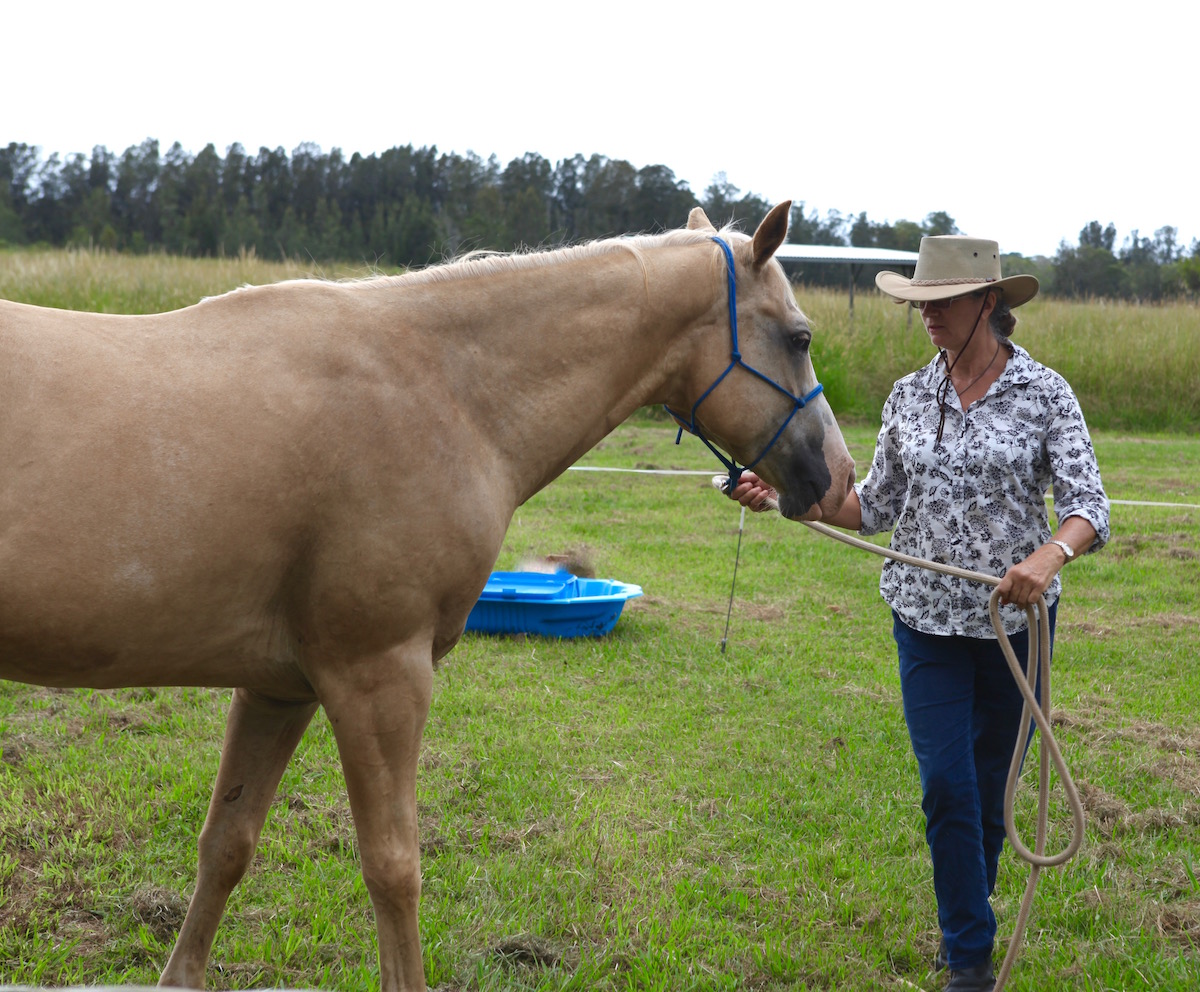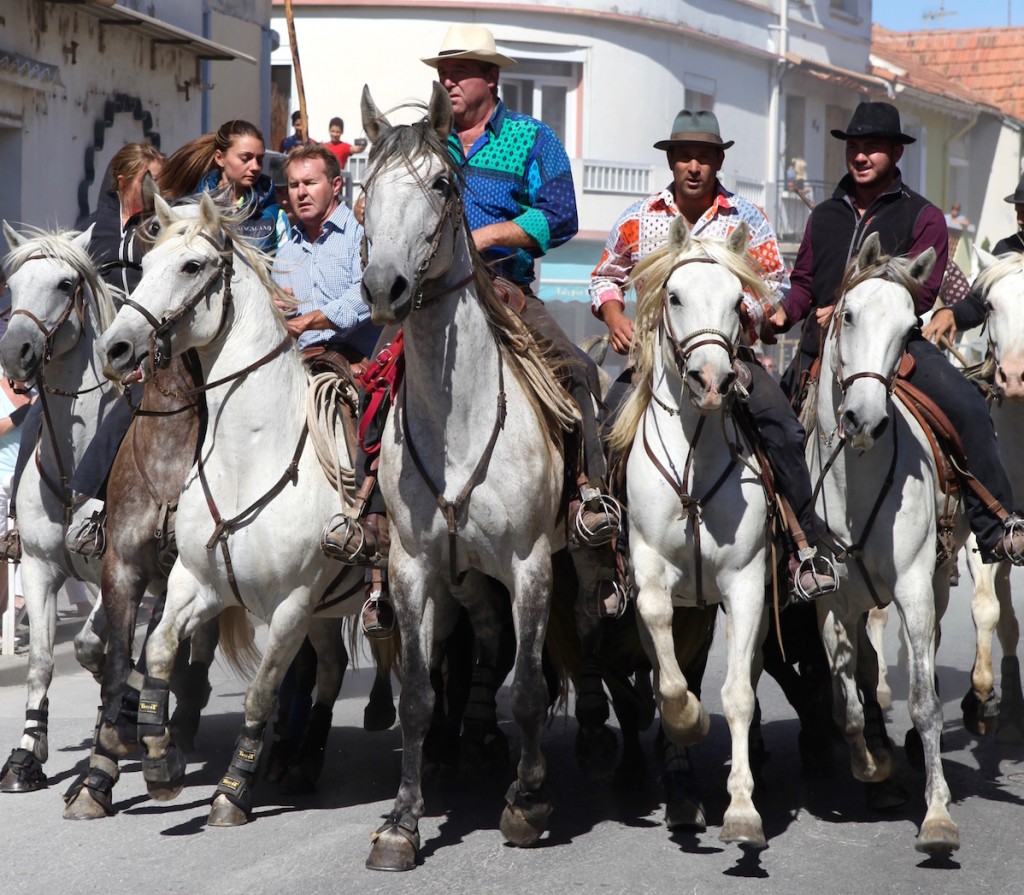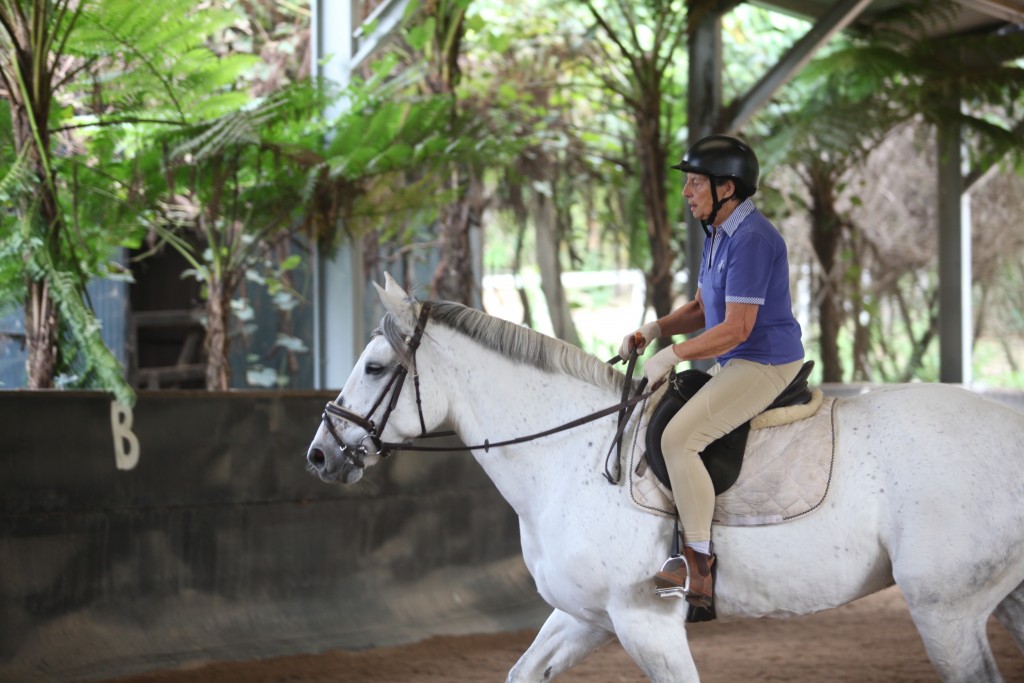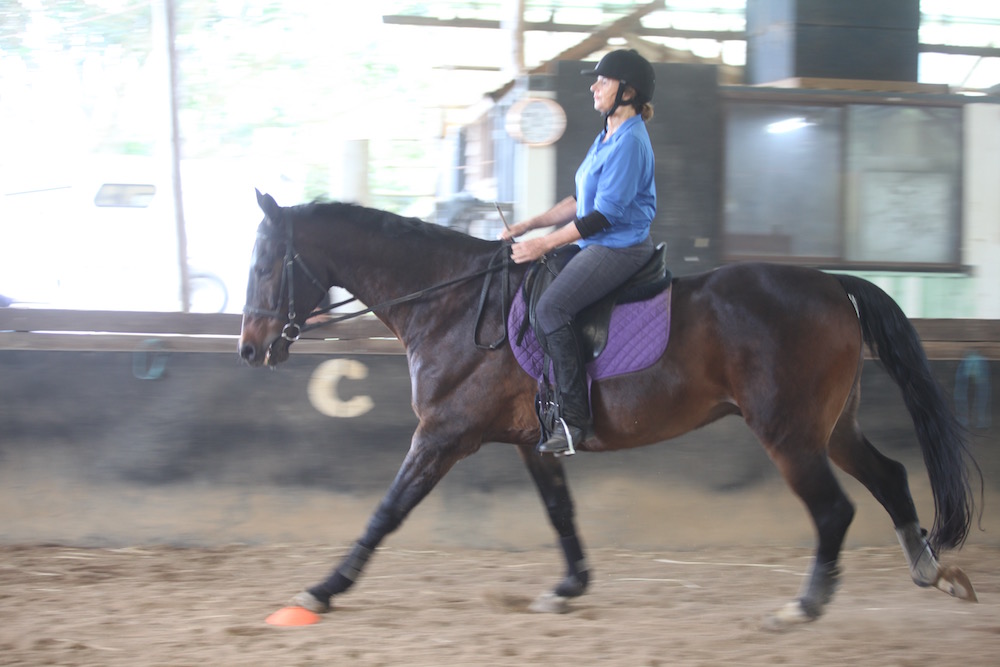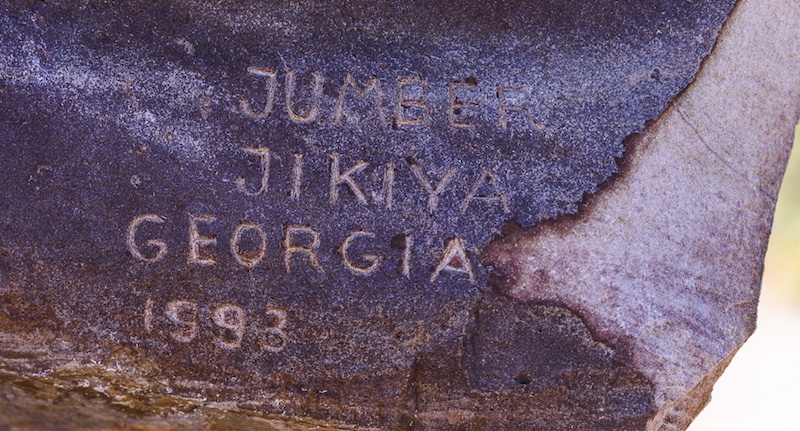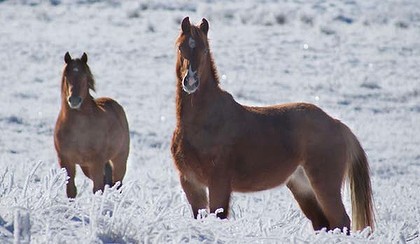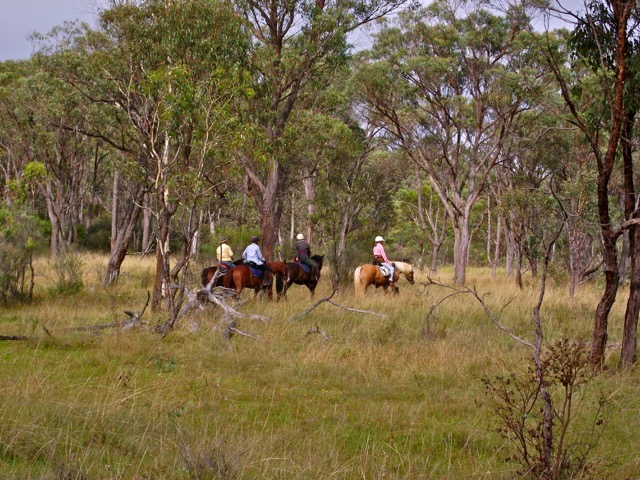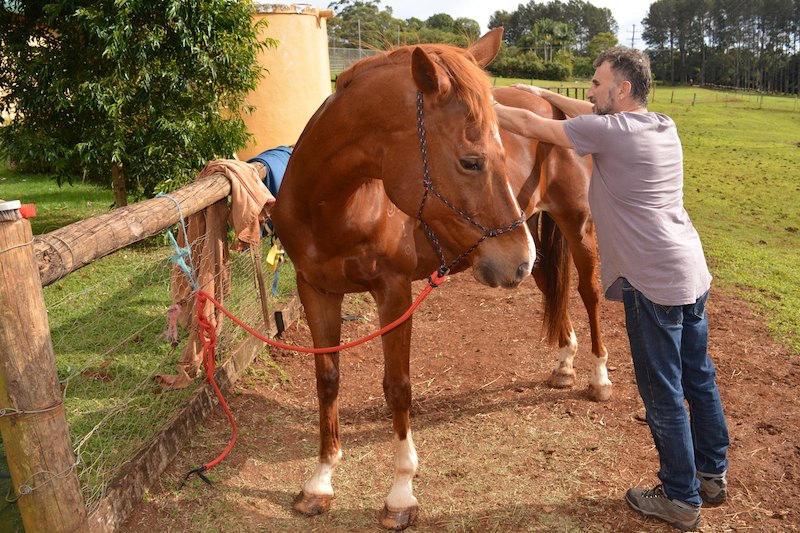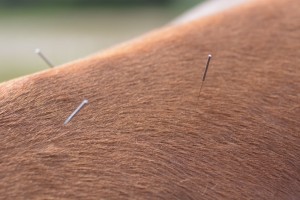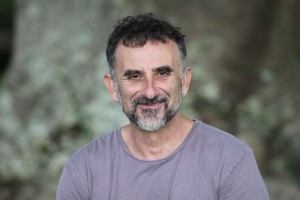The post Equine Facilitated Magic appeared first on .
]]>I was only five years old when I first noticed that horses made me happy. My best friend, Sally, a couple of years older than me, had a perfect first pony, a grey Welsh Cob called Lucy, as safe, sound and sane as they come, and Sally was kind enough to let me spend hours with them both, grooming, or walking beside them, or even riding, or doubling together.
Looking back through the mists of time, there’s something that stands out about those early memories – and that’s the fact that the absolute best times we shared were not necessarily the riding ones. The times spent talking down by the river while Lucy munched contentedly beside us; the times when we would tuck Lucy up in her stable, out of the bad weather, and just hang in there with her, plaiting her mane or simply sometimes just leaning against her, inhaling her warm horsey smell. All three of us just about as content as it’s possible for children and pony to be.
Fast forward almost sixty years and 12,000 miles away from the country of my birth, and here I am, with a group of like-minded women having just taken part in an Equine Facilitated Learning Level 1 course – in order to become practitioners of this groundwork based course, in which there are three participants – the client, the horse and the facilitator.
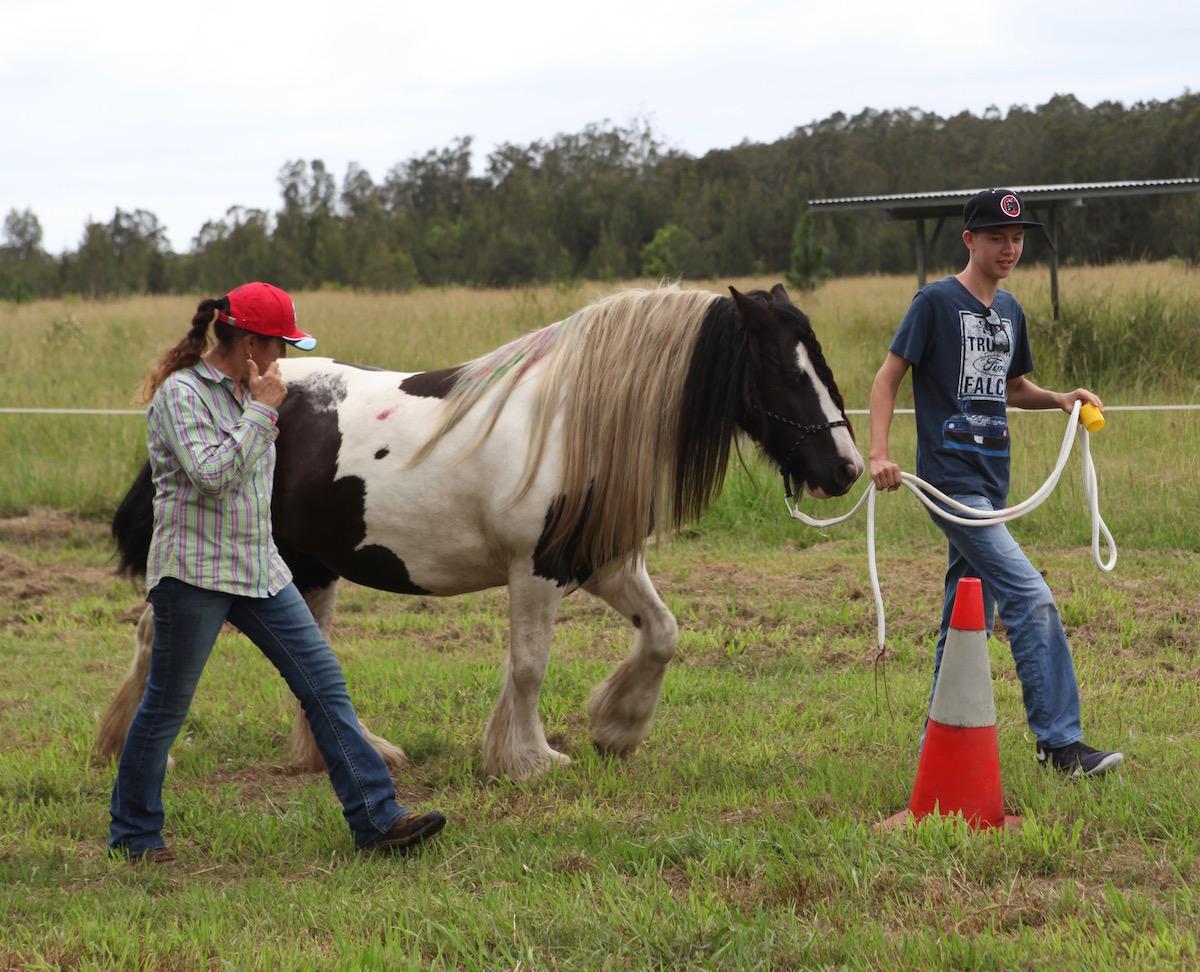
The client – 16-year-old Winter, the horse, Gypsy Cob Sweetcheeks and facilitator-in-training Sue Whatley.
After many years of horse rescue and rehabilitation, natural horsemanship and the teaching of my own methods to children, friends, family and volunteer helpers, I’m not new to the world of equine therapeutic modalities, but I decided to do this course for a specific reason – I wanted to have a qualification which will allow me to do something I’m passionate about – to set up horse groundwork sessions for our Save a Horse Australia rescue horses and for those who might benefit from time spent hanging out with horses, in which ‘magic’ is the key ingredient.
It was an intense four days! The clinic was conducted by Elaine Hughes, the guardian of EFL in Australia. Originally from the UK, but now based in Victoria, Elaine has had many decades of horse experience, and has studied with many of the ‘natural’ trainers, but it was a meeting with Frank Levinson, the founder of EFL, that prompted her interest in the program. When she and her family of four and two-legged friends moved to Australia, Elaine partnered with Sally Francis to create AEFL. Elaine teaches the clinic with her two off-siders, Louise, otherwise known as Irish, and her partner Dave.
What I witnessed as we moved through the four days into a deeper understanding of the horse and human bond, culminating in working with ‘real’ clients on the last day is that EFL seems to substantially deepen people’s understanding of their personal issues and feelings, and that some level of fundamental relaxation occurs.
But the careful – almost invisible – guidance of the facilitator also allows children and adults to experience, as Elaine says: “a huge surge in self-esteem and confidence when they realise they can create boundaries and direct a pony or horse to move in a particular way.”
Children who have stopped speaking; people with anxiety and depression; children and adults with physical or intellectual(or both) disabilities; people who are simply afraid of horses and want to learn not to be – all of these scenarios (and more) were presented to us over the four days, either in theory or practice with role play, or clients. It was an incredibly fulfilling experience for all of us to take our already existing horsemanship skills and our rapid immersion into EFL and to witness the ways in which we could help both ourselves, the client and the horse develop what I can only describe as an elasticity of brain and body. We learnt quickly to allow the space for the session to evolve into whatever is most fulfilling for the client and the horse!
The next step in becoming an EFL practitioner for us all is ten hours of sessions with clients, so watch this space!
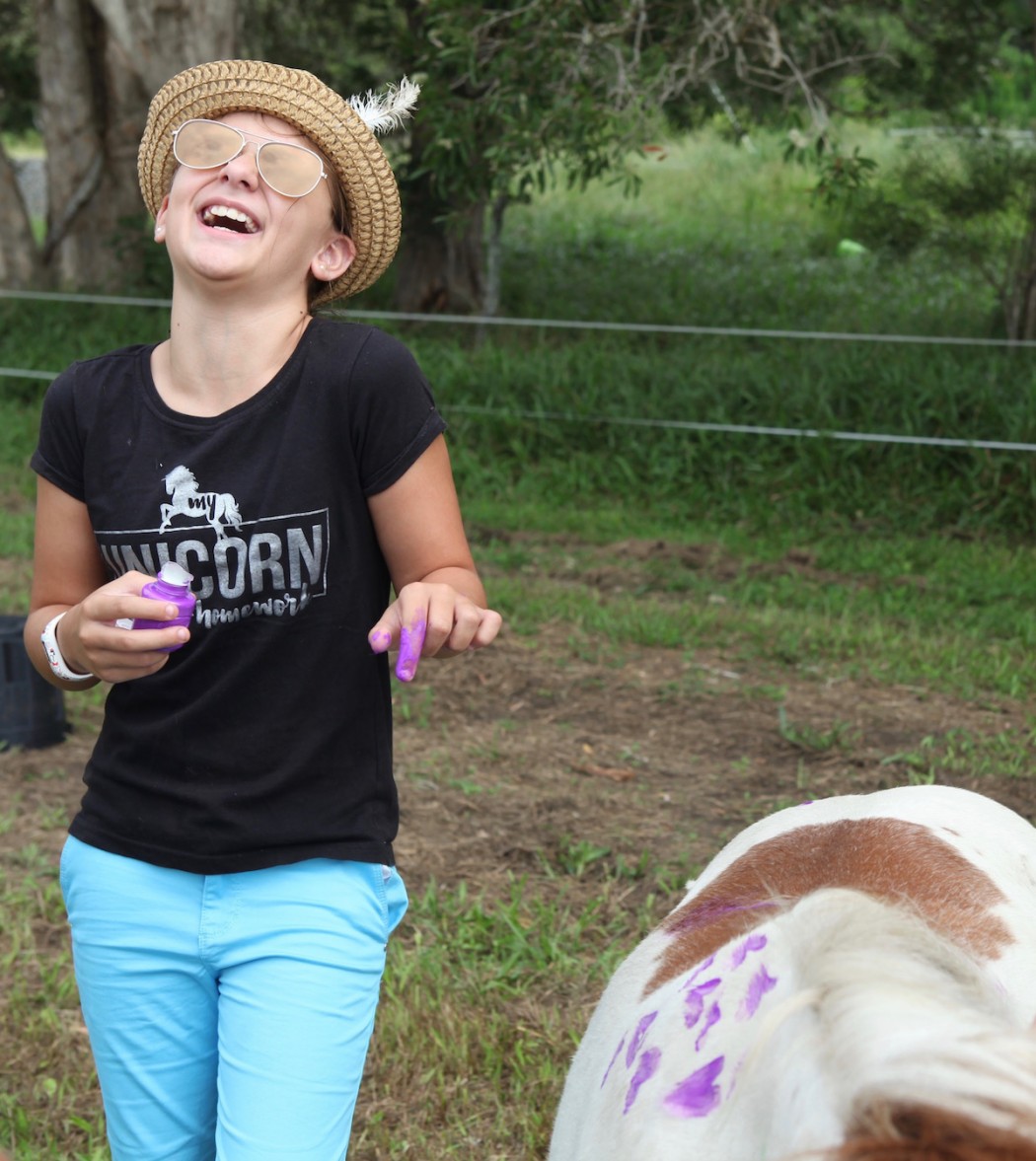
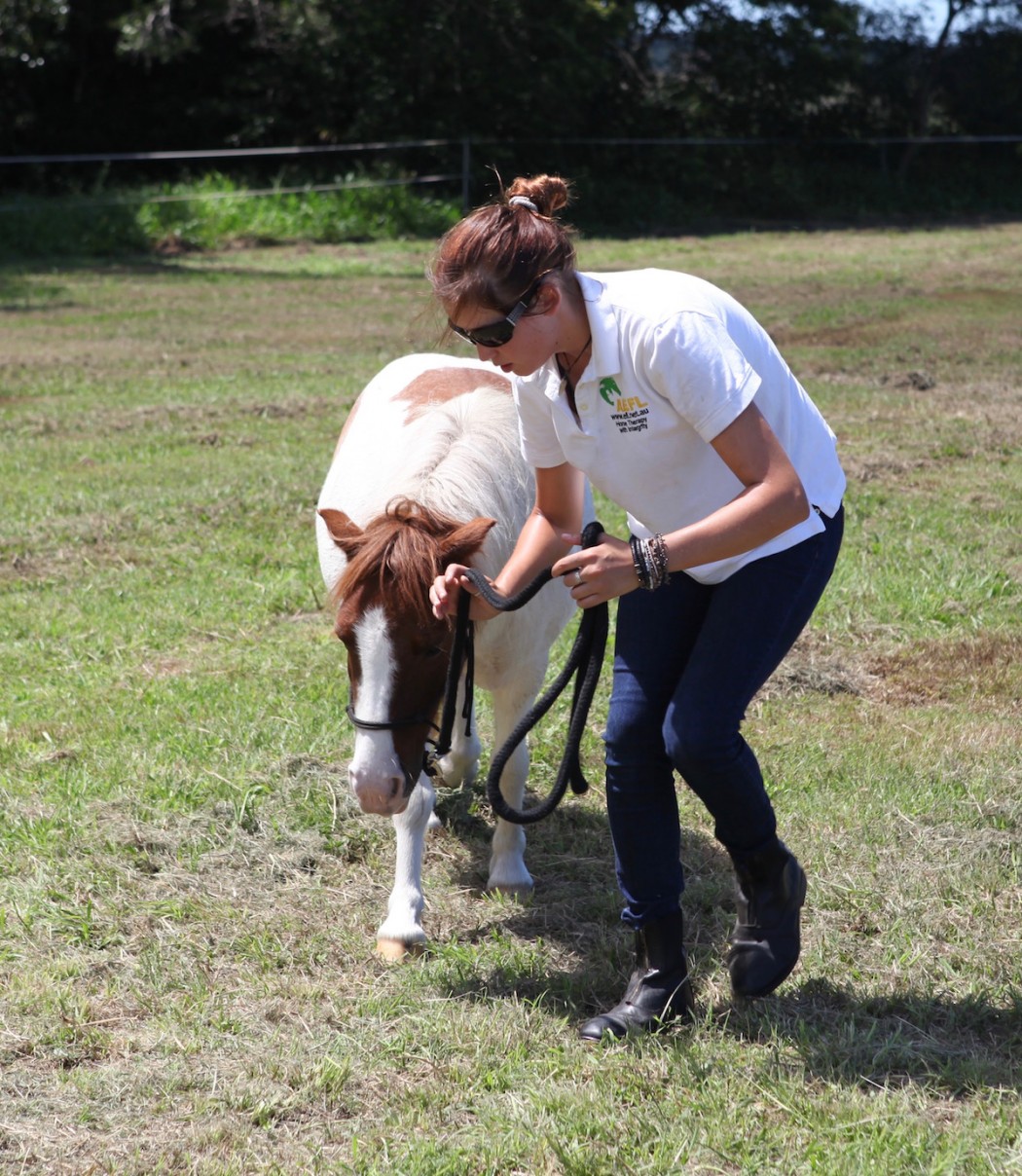
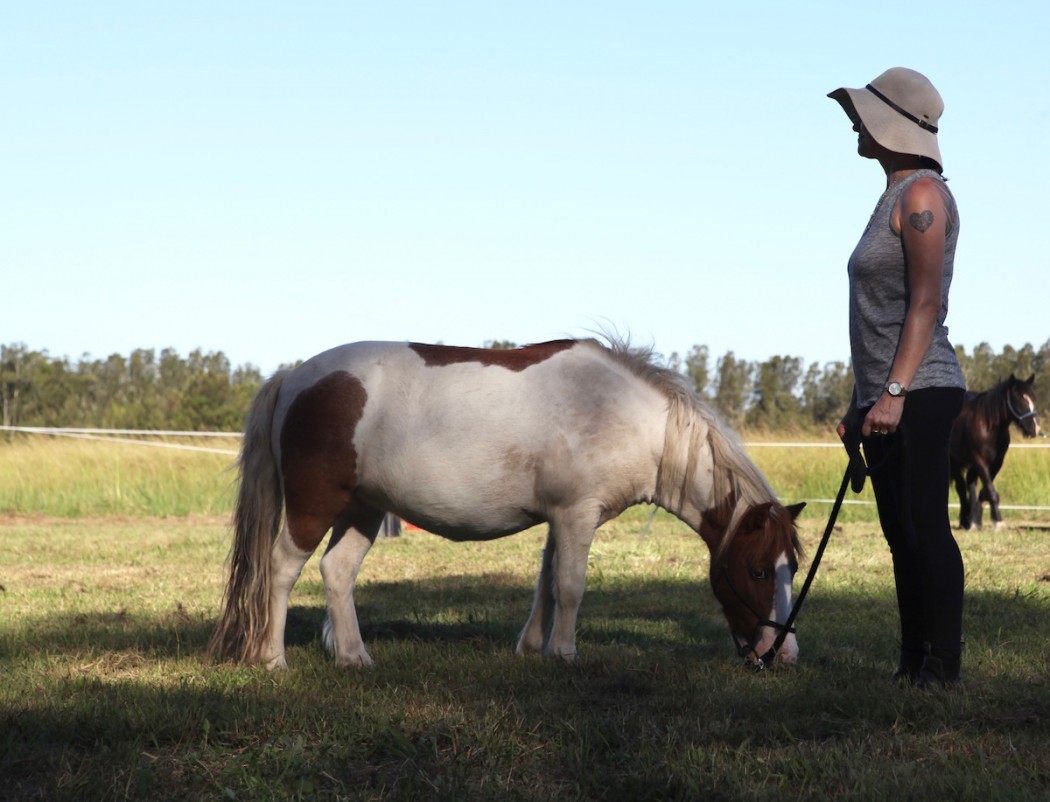
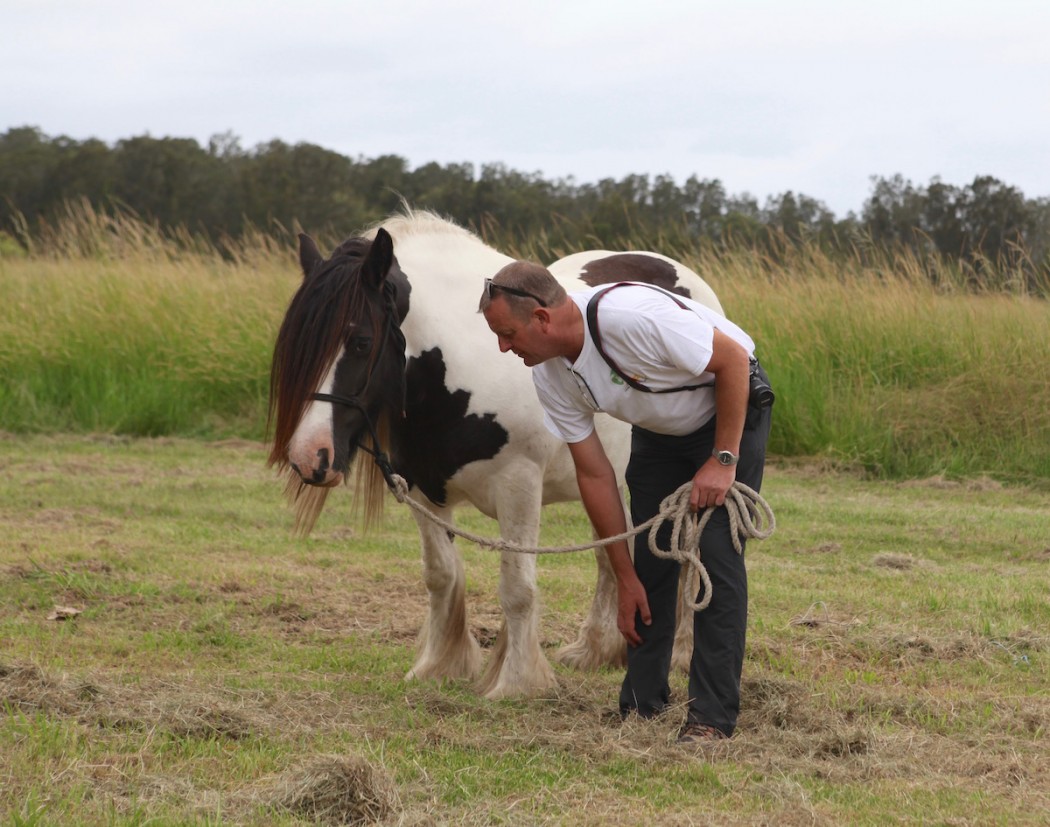
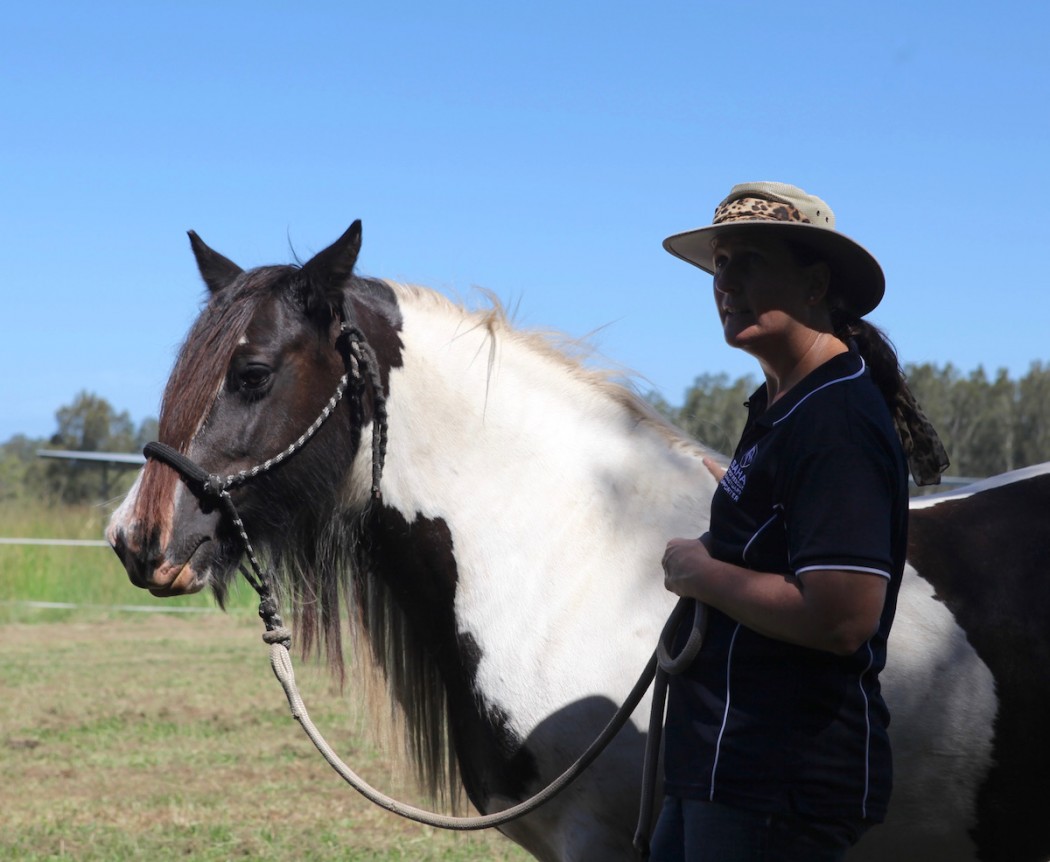
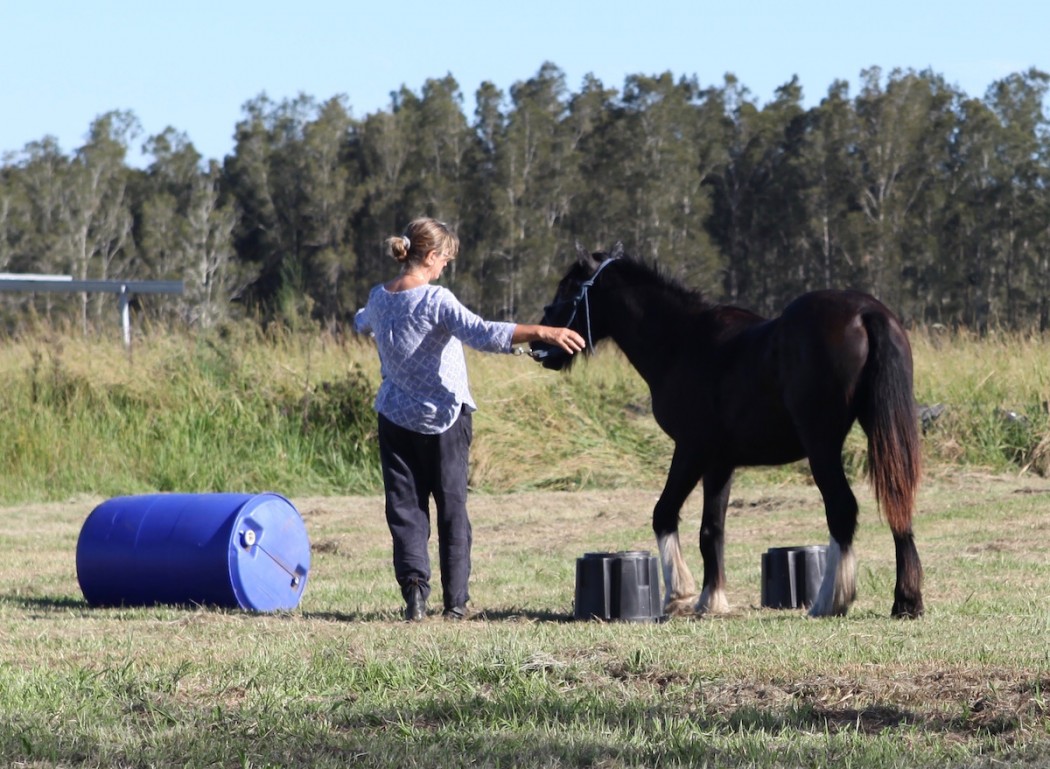
Captions: Sometimes it’s fun to just ‘paint a pony’. Irish aka Louise, gets down to Nina’s level. Magnolia hanging out with Nina. Dave shares a moment with Sweet Cheeks, Cathy Binz my fellow SAHA trainee facilitator. The little yearling Maddie and I enjoy some bonding time.
For more information on EFL go to: https://www.efl.net.au/
AEFL is the Platinum Training Provider for IICT – International Institute for Complimentary Therapies.
Candida Baker is President of Save a Horse Australia and editor of HubVibes. This column first appeared in the March edition of HubVibes
The post Equine Facilitated Magic appeared first on .
]]>The post The Past and the Present at the Lascaux Caves appeared first on .
]]>After a month in France in September, my very last ‘horse’ adventure was at the ancient Lascaux Caves in Montignac. I’d seen these magical caves on endless documentaries, and I’d always wanted to see them in person – and to continue learning about the relationship between horses and humans. The cave paintings – and you will have all seen the images I’m sure – are from 17-20,000 years ago, and feature a wide variety of animals that are recognisable today – including aurochs, bison, reindeer and horses – lots and lots of horses!
The caves (other than one original at Rouffignac which you visit in a train, passing ancient bear nests on the way) are exact copies of the originals and in the case of Lascaux 2, which was the one we chose to visit, only 100 metres from the real cave’s entrance. The caves had to be copied because unfortunately the amount of people going through them once they were discovered caused almost immediate damage to the paintings. The copy itself took seven years to complete, and the sites are incorporated into the World Heritage list.
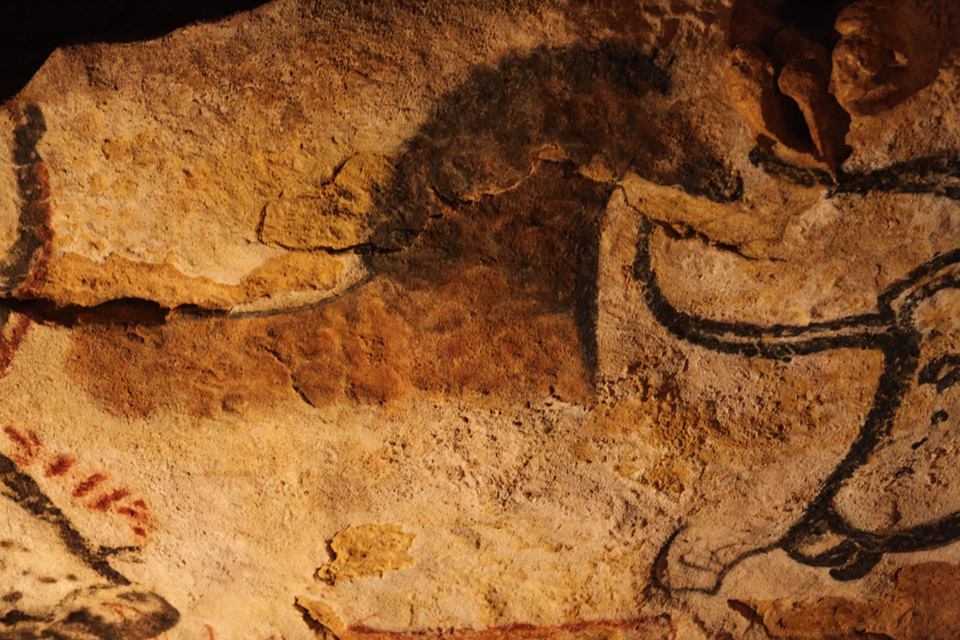
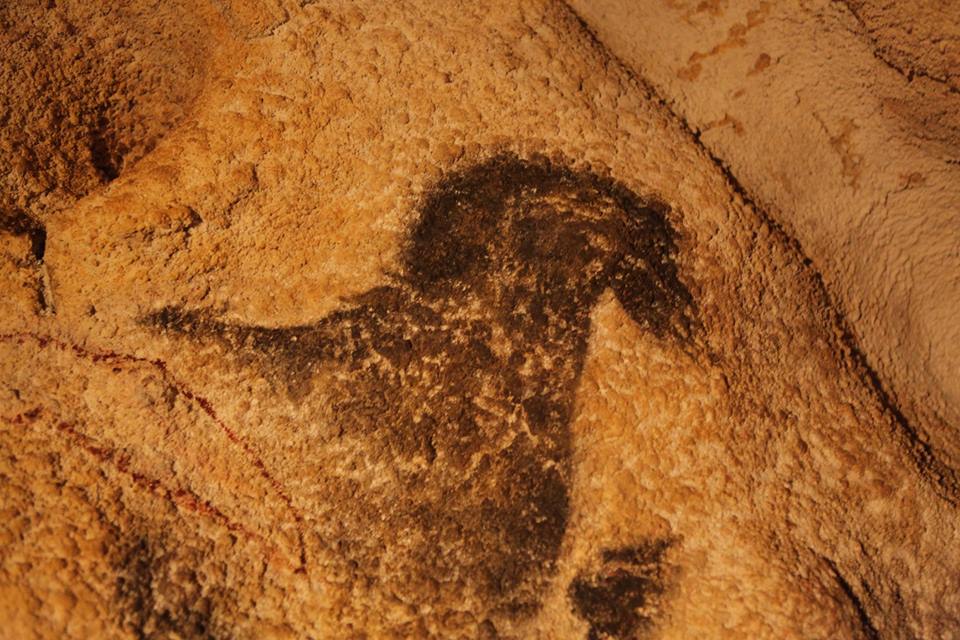
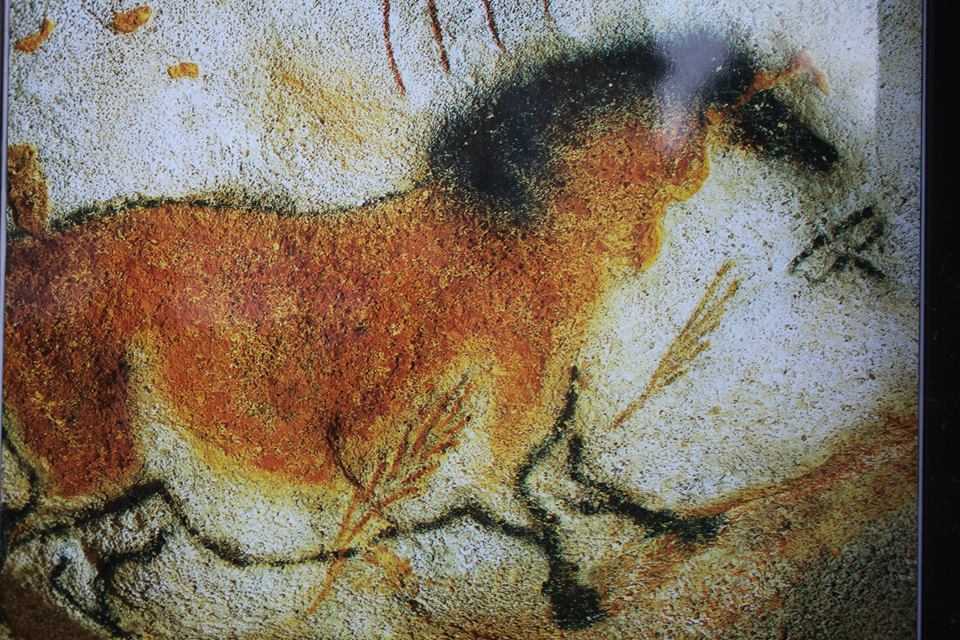
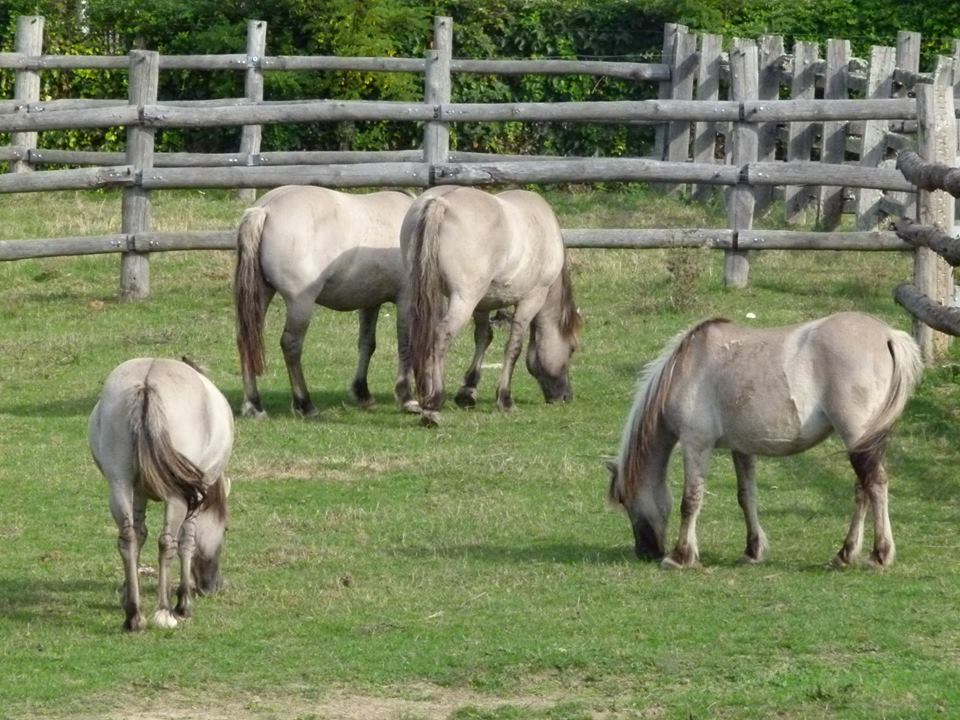 .
.I can’t even begin to describe the feeling of being surrounded by these wonderful images of horses – and the energy in the paintings. But THEN – even better, we visited a wild-life park nearby where they have a Przewalski’s horse – or Dzungarian horse, a rare and endangered subspecies of wild horse (Equus ferus) native to the steppes of central Asia.
It was extinct in the wild but thanks to a careful breeding program it has no been reintroduced to Mongolia. Most “wild” horses today, such as the American mustang or our own https://www.viagrabelgiquefr.com/ brumby, are actually feral horses descended from domesticated animals that escaped and adapted to life in the wild.
The Przewalski’s horse has never been domesticated and remains the only true wild horse in the world today. The horse is named after the Russo-Polish geographer and explorer Nikolay Przhevalsky (Polish name: Nikołaj Przewalski) and I’ll let you be the judge of how similar the little chap (who has donkeys for company at the moment) looks to the ancient cave paintings.
The grey ponies also tell a wonderful story because the Tarpan – also known as the Eurasian wild horse or simply, wild horse, is now extinct. The last mare believed to be of this subspecies died in captivity in Russia in 1909, but in the 1930s, several attempts were made to develop horses that looked like tarpans through selective breeding, called “breeding back”. Historians of the ancient wild horse assert that the word “tarpan” only describes the true wild horse but at the same time, the breeding program has been successful enough to produce these lovely grey ponies that bear a very distinct resemblance to their ancient ancestors.
So what I did glean from seeing the Camargue horses, the Cardre Noir dressage horses, and the ancient cave drawings? It yet again reinforced for me how the relationship between horse and humans is one of – when it’s good – a chosen relationship, on both parts. Finally, if you do happen to have an interest in horse history I can highly recommend Susanna Forrest’s The Age of the Horse which I reviewed for the Times Literary Supplement in the UK. It’s a fascinating account of the history of the horse from around the world. https://www.the-tls.co.uk/articles/public/horses-tale/
The post The Past and the Present at the Lascaux Caves appeared first on .
]]>The post Horses and humans – and the shadows between appeared first on .
]]>There’s something so enticing about the drive to The Channon. Enveloped by green rolling hills, the small village offers visitors an eclectic offering of outings – from bushwalks up to Protestor Falls in the Hills, to the much-loved Channon market on once a month.
For its size, The Channon punches well above its weight in the art stakes with its beautiful Teahouse gallery in the tiny village, and with a large population of practising artists.
Artist Andi Neilands had a change of direction a few years ago, when she left behind a long career at TAFE teaching IT and 3D modelling and animation to study art. This show, Virtual Shadows, is the result of her advanced diploma with an emphasis on light and shadow to create edges, form and volume.
It’s a cohesive exhibtion – it could perhaps be called humans and horses, since the works are of men, women and horses. But it’s the women who have the relationship with horses, the men are incidental and somewhat exterior to the main body of the work. If a shadow of Neilands former career shows itself, it’s in the precise techniques she’s used to replicate the works in various media, so that a drawing becomes a painting, becomes a bronze. (Many of the works are available as prints or reproductions.)
One small area of the exhibition concentrates on one peson – artist Ken Johnson cialis 20mg prix who acted as a personal mentor to Andi – particularly whilst she was coming to grips with the art of sculpting. Johnson is portrayed in a bust and on paper, and Neilands pays tribute to Johnson’s emotional depths in all three works.
One of two of the most expensive work in the exhibition, a bust of Bucephalus, Alexander the Great’s warhorse, is carved out of white carrara marble from the Michelangelo quarry. It has an almost transluscent quality, and the proud horse’s head takes an easy pride of place. Interestingly its ‘shadow’ are smaller heads printed in plastic by 3D printing. From the most natural, to the most unnatural material on the planet. Both, these days as seemingly durable as the other.
The messages behind the mediums are subtle. Less subtle but interesting to a fellow horsewoman, are the works depicting the sometimes almost erotic, always highly emotional relationship between women and their horses. My personal favourite is a small clay maquette of a horse lying down a woman sitting by its stomach with her head on her lap, and the horse’s head gently turned towards her. The title of the work is RUOK? and for me it’s a reminder of how, although as a human it’s my job to look after my horse, every now and then in my dark days my horses have turned to look after me.
The imperative for an artist behind a work of art is always fascinating. As the viewer what do we see? As the artist, what did the creator intend? Perhaps the most personal of all is a bust of Neilands’ father – My Father, My Hero – drowned at sea in a boating accident in 1957 having saved the lives of Neilands, her sister and her brother. The bust of her father held great emotional signifcance for the numerous descendants of the tribe at the opening – reinforcing the notion that in any form of art it is the story that is contained within it that is the emotional connection to the outside world.
I will be interested to see the expansion of this artist’s work.





Virtual Shadows is showing at The Channon Teahouse & Gallery in Standing Street until December 10.
For more information on her works go to andineilands.com or contact Andi on [email protected]
The post Horses and humans – and the shadows between appeared first on .
]]>The post Sue Spence’s Horses Healing Humans goes international appeared first on .
]]>It’s not difficult to imagine Sue Spence as a child – she’s talking to me about her childhood in the south island of New Zealand, growing up as the horse-obsessed child of non-horsey parents, and the lengths she would go to go riding. “It really didn’t matter whether it was sleeting, snowing or blowing a gale,” she recalls, “I would get on my pushbike and cycle off to my horse in all weathers. It was the only thing that made me truly happy, and for many years I competed as a show jumper.”
But then trouble reared its head in the form of an unexpected illness. “I’d moved from New Zealand to Australia,” she says, “to Queensland, and I was leading a pretty busy life. I have ADHD, and so for me it was nothing to teach six aerobic classes and then go home and go for a ride, but really I was running on adrenalin. I was the kind of rider that they describe as having a ‘hot’ seat – I could make even a quiet horse jump for the moon!’
But although she felt as if she was coping, in fact 15 years ago her life was rocked to its foundations after she was diagnosed with early breast cancer, and it was recommended that she undergo a double mastectomy and reconstruction. “After 30 years of living life at blistering speed – running fitness centres and show jumping, I realised I had to do things differently,” she says. “I moved to a quiet place in the country, and I began to my training in horse whispering, which meant I needed to use a calmer energy.”
Not that it went so well in the beginning. “The first time I tried to get my horse to walk quietly beside me, I was so pent up with anxiety from the cancer and running my gyms, that I was just like ‘go…go…go!” she laughs. Suffering from acute anxiety after the breast cancer, she had to learn to become calm and still. “Nobody had ever taught me that,” she says, “and my ADHD combined with my natural tendency towards fitness just meant I had no idea how to drop into a still, quiet place.”
Sue’s obvious sense of humour shines through as she tells the story of her immersion into the skills of natural horsemanship. “One of my most amazing mentors has been Ken Faulkner,” she says. “I did a clinic with Ken, and I remember I was having a little trouble getting my horse to do something I wanted him to do, and he said, ‘the problem is you have a lot going on inside.’ I was so annoyed. “What do you mean?” I shouted at him, “I’m perfectly relaxed!!” But of course, I was nowhere near relaxed and he spotted it immediately. It was a life-changing moment and it took a horseman to bring me out of my anxiety,” she says, still – I have to say with what you might call a fanatical show jumper’s slight tone of disbelief.
But after learning the tools of the trade, and discovering what a massive difference it had made to her, Sue’s evangelism for a cause kicked in. Her training as a personal trainer and lifecoach became invaluable when she began to run groundwork workshops for women with issues around boundaries and self-esteem. Some women would break down doing her simple ground exercises, because they had never realised how their body language undermined their verbal language.
The whole point being of course, that natural horsemanship, in whatever manner it is taught, is a physical language that allows the human to become a horse ‘leader’, in a non-threatening, strong way, where the verbal and physical language they use is congruent.
But for anyone who has ever thought that you needed a ton of space, horses and equipment to create what has now become an international program with licenses provided to approved practitioners in three states of Australia, you can think again! Her business, Horses Helping Humans™, and her registered charity, the Horse Whispering Youth Program, started out with exactly the same horses she has all these years later – two Shetlands, Mindy who is 28 and Yogi, her 17-year-old son, Larry a 11-year-old rescue mini-pony who lost an eye and Sue’s beloved 28-year-old Quarter Horse,
“People think that when they come to my place they’re going to see something grand, and they get here, and I still have my little motley mob on less than an acre,” she laughs. “But as the program progressed and we began to work with the Department of Youth Services in Queensland, we were able to apply for funding, so now I have a little grandstand, a shade sail over the roundyard and an outside toilet,” she says proudly.
(At the time as building up a business, there was also the family to consider, and if you happen to be a Bacholerette follower you may have noticed Sue’s name used in a completely different context – as the mother of Gold Coast entertainer Apollo Jackson, who was recently a hot contender on the show, and has inherited not just his mother’s energy levels, but also her love of horses.)
For those who might assume that at some point along the way strategies, business-plans and trademarks would have been part of her thinking, she’s still in awe at how the growth of the program has pretty much taken care of itself.
“I can’t even begin to tell you how much serendipity is a part of what I do,” she says. “It’s as if the universe wants HHH out there. Just for one example – when I ran a corporate workshop in Rockhampton one of the practitioners was a business man who told me I needed to go home and protect my IP. I didn’t even know what was! Then later on he asked me again if I’d done it and when I said no, he basically told me I had to do it. I was terrified because I didn’t understand it at all, but then I said to him, well, can I set the license up the same way they did with Les Mills Body Pump licenses, because I can do that – and so that’s what happened. Everyone is trained to a certain level, it’s easy to run and it’s all been based on the Les Mills model because I was a fitness instructor!”
In Rockhampton more synchronicity took place when the local Heritage foundation stepped into support the program. “The people who wanted to start it had no space, and no horses,” she says cheerfully, “so that was going to make it a little difficult, but the Heritage park offered their heritage horses and use of the park and so we were able to set it up.”
In New Zealand it was a magistrate that decided the country needed the program for repeat offenders, and that is exactly what it is being used for. “In Victoria, on the Mornington Peninsular, the license has been brought by a very high-level Parelli practitioner who has an indoor arena, an outdoor arena and a huge American-style barn,” she says, “so really you can see it’s just spreading its wings in whatever way it can.”
The license fee includes all training manuals, the training of a facilitator, public relations, visits from Sue to various local businesses to promote the program and connection to youth service and other government agencies. “What we do is that the facility that is going to run it is fully operational with clients booked from day one,” she says, “people are 100% set up to run it by the time it opens with full backing from their community.”
One of the reasons why the program is so popular with the Department of Youth Services is that they can measure its success. “The essential point of the program – no matter who else it is used for, is that it’s aimed at disadvantaged and at risk youth,” Sue explains. “After thousands of teenagers have gone through this program, they are able to track the success of it by the number of teenagers who have gone on to university, or improved their performance at school, or stayed in school when they were in danger of dropping out – that’s why we have such a good reputation, and why it was so important to make the licenses are done properly.”
Horses Helping Humans also has a connection with Griffith University whereby interns do up to 50 hours volunteering as part of their degrees. “For us to have volunteers who are studying psychology, criminology or business is priceless,” says Sue.
All the students the program works with are referred by youth and family services, school chaplains or counsellors, mental health organisations, child protection, homeless youth and the Justice Department.
It perhaps wasn’t surprising – or only surprising to Sue at any rate – that a publisher became interested in her story. “When they first rang me they left a voice message,” she says, “and I was so busy that I hadn’t even got around to to calling them back, but a friend who’s involved in writing heard the message and said to me, ‘Sue, Pan Macmillan are one of the biggest publishers in Australia, call them back NOW!’”
She did, and a contract followed – but for Sue whose ADHD does not allow her to sit still for long, writing the book was just too hard. “I can’t write a shopping list without getting bored,” she says. “I had no hope with the book.”
Enter serendipity again. “I was at the hairdressers and I was talking about my problems with the book,” she says, “and this woman popped her out from a dryer a few chairs down, and said, ‘Sue Spence! Is that you?’” It turned out to be an old friend of mine who was now working as a transcriber – and she offered to come and transcribe my words for me, so I could walk up and down as much as I liked while I dictated my words, and she would write them up. I think we did the book in record time!”
The book gained Sue Australia-wide publicity that brought in new supporters, and even more ideas for how the program can expand into the future. In the meantime the first Horses Helping Humans conference is taking place soon on the Mornington Peninsular, and Sue is in huge demand as a public speaker right around Australia. I wouldn’t be surprised if you could make that right around the world within a few years – a bit of serendipity allowing!
This story first appeared in the December issue of HubVibes – to subscribe to the free monthly magazine go here: equestrianhub.com.au/publishing/
To find out more about Sue Spence and the work she does, go to: Horses Helping Humans . In 2014 Sue Spence received a Women In Business Awards for Community Dedication and in 2016 she was awarded a Business Award for Creating Change.
The post Sue Spence’s Horses Healing Humans goes international appeared first on .
]]>The post The White Horses of the Camargue appeared first on .
]]>When I was a five-year-old, living in London, my father went on holiday to France, and visited the Camargue region.
Knowing already what his horse-mad daughter would want as a present he brought me back a book – Crin Blanc – (English translation: White Mane). It was black and white still shots from the 1953 short movie, which told the story of a young boy who tames a wild white stallion, Crin Blanc, so infuriating the locals that they hunt the pair, until the boy and the horse choose to disappear forever into the sea. The film won numerous awards including the short film Palme d’Or at the Cannes Film Festival.
Along with Black Beauty, My Friend Flicka, Tam the Untamed (any Australian readers remember that now very politically incorrect book?), Champion the Wonder Horse and a bit later The Silver Brumby, Crin Blanc became one of my all-time favourite books. It was in French, but the story was pretty self-evident, and from the time my father gave it to me, I was determined that one day I would go to the Camargue and ride a horse. (In fact as I child I was determined I would go and tame a wild stallion and bring it back to England, but dreams do become more realistic as we get older!)
So there I am – 57 years (yes you read that correctly) later, cantering along on Tato, or actually more like galloping along on Tato, a sturdy 14.3hh perfect representation of his breed, in the company of the manager of the ranch I’ve chosen to ride at. He’s on his part-bred Camargue/Lusitano five-year-old who still thinks every stick is a horse-eating monster, whereas Tato, fortunately has seen it all before. Despite that, though, he’s definitely forward, keen to go, soft-mouthed, and easy to ride.
There’s a minute, as we gallop along the edge of a small river, which has a herd of young horses, foals and mares on one side, and on the opposite side a large herd of the famous Camargue black bulls, where I actually have time to think – “This is the perfect moment.”
I have had, as the French say, ‘la chance’, because the threat of wet weather has kept everybody else away. Thanks to having spent a year working in French stables as a teenager, my ‘horse’ French is up to par enough so that at least Patrick, the manager of La Cabane du Daladel, and I can communicate on all aspects of horse care. Patrick is training his young horse, Crom, for bull-work, one of the main disciplines for the Camargue horses.
It’s a sad fact that there are actually no herds of true wild horses left anymore, but the reasoning behind the decision to allow registered breeders was to stop in-breeding or accidental diluting of the bloodlines.
In 2003, three registration categories were created to identify Camargue horses: one the pure Camarge – horses registered in the stud book, foaled and identified in the Camarge, branded before weaning and from a ‘manade’, a small semi-feral herd of which only 45 exist; the Carmarge hors manade – horses registerd in the stud book, foaled and identified in the Camargue from the select list of private breeders and the Camargue hors bercau – horses registered in the stud book, foaled and identified outside of the Camarge to registered breeders.
Thanks to these measures, the ancient blood-lines of the Camargue horses, considered to be one of the oldest breeds in the world, will be safe forever. For thousands of years these horses have lived in the delta of the River Rhône, a wetland marshy area which these days is a massive national park.
Patrick tells me that the Camargue horses in the main live a: “good life”. Those brought in for regular trail-riding work – which of course if the fate for many of them – are lucky. “They work from April to October,” he says, “and then they go back out into the marshes.”
And when he says marshes, he means marshes. When we are not trotting or cantering along the sandy paths between the lakes and wetlands, we are picking our way through water which varies from a few inches deep to well up to Tato’s stomach, so that we are almost swimming and my feet are somewhere around Tato’s head trying to keep my boots dry!
What is extraordinary to me is that not only do these horses cope with this environment, they positively thrive on it. Thanks to the fact that the water of the Rhône is sweet rather than salty, the somewhat unappetising looking stringy grasses are apparently full of nourishment, and the marshes too are full of herbs and different sorts of grasses. Patrick tells me working horses are fed once or twice a day, but normally just with hay, and are usually let out at night to graze. I have to say I did not see one skinny horse during our four-day visit there.
I don’t know about other ‘ranches’ but at La Cabane du Duladel when a horse reaches retirement age from its work, it’s put out to pasture with the foals and mares, until, as Patrick elegantly puts it, “one day we find him asleep forever”.
So one thing (as a vegetarian) that concerned me of course, is the ‘bull’ work, but in the Camargue, it is literally that, rather than bull-fights. The ‘guardians’ – horse-riders – use their horses to round-up the bulls, but also in fetes and street events throughout the year where the bulls are galloped with through the town, while young men jostle for the privilege of hanging onto a bull’s horns! It sounds highly dangerous, but in fact the street work with the bulls and horses is much safer than the ‘tauromarchie’, or bull-fighting in the arenas where the young men have to remove a string tied around the bull’s horns, and where a fresh bull is brought in every 15 minutes.
The best bulls live to be up to 40 years old, and some are so famous they even have their own statues.
At one point, as we stop and gaze at a herd of cows with their calves, their horns just beginning to take on the beautiful lyre-shaped points they grow as adults, Patrick looks pensive. “I think,” he says, “in the Camargue we love our bulls even more than our horses.”
Watching him sit Crom as he dances his way around the marshes, and how he gently reassures him, I think – or hope – he’s probably teasing me.
The family herds in the Camargue are so important that when we ride into the middle of the massive marshy area where the mares and foals are eating, all Patrick has to do is click his tongue and call and they all make their way towards us, gently saying ‘hello’ to our horses and generally showing the calm temperament that their breed is known for right from the start.
Some researchers believe that the Camargue horses go back as far as the small Paleolithic Solutré horse which was hunted for meat. The horses were appreciated as riding mounts by the Celtic and Roman invaders, and blood lines of the Iberian horse have been found in their DNA. In fact, the original Spanish ‘Jaca’ horse was probably a cross between the Celtic pony and the Camargue. It was later improved by crosses with other horses brought in by the Moors, and because of its cross to the Jaca its DNA found its way into the Americas where breeds such as the Chilean and the Criollo show some of the characteristics common to the Camargue horses.
So what are the characteristics? My little Tato was a brilliant example of a pure Camargue horse – their average heights being from 13.3hh to 15.2hh maximum. He was broad and stocky with a short neck, deep chest, obviously strong legs, and a beautifully full wavy mane and tail that I had plenty of time to gaze at. His ears were small and forward – and as Patrick said, “he loves his work”. His trot was even and flat, and his canter too. With the modern version of a working Camargue saddle on he was so comfortable I could ride all day, and his back end was as well-muscled and round as any Quarter Horse.
Over thousands of years, their hooves have adjusted to the marshy ground, becoming hard and tough with very flat wide soles. Put one of our thoroughbreds in there and I swear they’d have an abscess and thrush in a week or two!
The two hours seemed honestly to pass in ten minutes – we passed swans, and water-birds of all kinds, an otter in the river, and began to make our way peacefully home.
There’s only one problem with ticking something off your bucket list, I thought as I reluctantly dismounted – it means it’s unlikely to happen again – but it’s an experience I’ll certainly never forget. I hope little Tato enjoyed it too, and that he too, when he reaches retirement age will live out his days in his marshy wetland home.
We’d chosen to say in at the Mas du Notaire winery in Gallician, in the heart of the Camargue. The beautiful old farmhouse has several forms of ‘gites’ – accommodation – attached, including access to a kitchen and refectory. We were there on the exact weekend that they were reliving the glory days of summer, and bulls and horses seemed to be everywhere in the town – in fact everywhere we went in the Camargue the white horses seemed determined to find me – we saw them out in the marshes, making their way across roads and rivers, and in every town we drove through.
The towns too, are famous for their beauty – Arles, of course, where Van Gogh lived for a year, and was at his most productive, and a special mention for the amazing cathedral in Saintes Maries de la Mer, dedicated to Saint Sarah, the patron saint of the gypsies. Another non-horsey high-point was definitely the ornithological park only a few kilometres out of Saintes Maries de la Mer, with its flocks of pink flamingos.
The Camargue is truly a magical place – if it isn’t on your travel bucket list, I suggest you add it, you won’t regret it!
A version of this story first appeared in the HubVibes ezine: https://equestrianhub.com.au/publishing/
For trail riding contact: La Cabane du DALADEL
Patrick Fargier
D 58 – 30600 MONTCALM (between Aigues-Mortes and les Saintes Maries de la Mer)
Tel / Fax 04 66 73 52 08 – 06 20 78 03 74
www.chevaux-listel.camargue.fr
For Mas du Notaire go to: https://shop.famillerambier.com/en/lodging/guest-houses-of-the-mas-du-notaire-in-camargue/
For the Ornithological Park go to: https://www.parcornithologique.com/https://www.parcornithologique.com/
The post The White Horses of the Camargue appeared first on .
]]>The post 75 – and she’s still tall in the saddle appeared first on .
]]>I feel a bit ashamed of myself to be honest. I think it was about four years ago, in my late fifties, when I began to complain a bit about a slightly arthritic right hip that was preventing me from hopping on and off a horse in quite the style I’d been used to, and I started to talk about whether it was time to give up riding altogether.
But recently I met Janet Edgerton, and I have to say – I’ve been somewhat silent on the subject of riding, and ageing, because at the age of 75 (it was her birthday a few weeks ago), Janet is riding on a weekly basis, and not only that, but she came back to it after a 36-year-break.
I’m standing on the sidelines of the arena at the Byron Bay Equestrian Centre watching Janet and her fellow rider, Beeb Fleetwood, a mere 64, going through their paces on two of Tesse’s most precious horses. Beeb is on, Junior, a somewhat ironically named massive 16.3hh warmblood, and Janet is on Lucy, Tesse’s own personal Percheron.
As I watch, Janet urges Lucy into a canter, and Tesse is giving her encouragement. “Keep your leg on,” she urges, “don’t let her fall out – well done!”
I’m catching the end of the lesson and Beeb and Janet are going through their final paces. I’m impressed, not least because I suspect I wouldn’t last 20 minutes without gasping for breath, but afterwards when I talk to Janet about her late re-entry into her best-loved hobby, I’m not surprised at how fit she is. “I ride every week,” she tells me, “but I also ride my bike, do a one-kilometre swim a couple of times a week, and play badminton twice a week, so I’m pretty healthy and fit.”
Pretty healthy and fit doesn’t even begin to cover it really – but I do wonder why Janet came back to riding after so many years away from it.
“I grew up in England with horses,” she says, “we were into hunting and showjumping, and I competed until I was in my twenties, and rode until I was 37. But then I met my husband over in the UK, who was Australian, and we had three children, all of them born over there, and life just simply got too busy. He was keen that we try living in Australia and so we moved here in 1984.”
At first Janet wasn’t sure if Australia was for her. “It took me about a year to settle in,” she says, “it was so different. We settled up near Pottsville, but somehow life was so busy there never seemed to be time to ride or get into it properly. It wasn’t until a couple of years ago that I was talking with Beeb about her lesson down here, and she suggested that I come along.”
Janet took her time – checking out the centre, and watching a couple of lessons, until in March last year, she had her first half-hour lesson. “I took to it like a duck to water,” she said. “I do think it’s a bit like riding a bike – you never forget. Now it’s a highlight of my week and I really look forward to coming down and sharing my lesson with Beeb.”
Beeb Fleetwood, Janet’s lesson partner, also came from a horse background. Beeb grew up on a farm in Western Victoria, and like many kids do, started off small. “I learnt to ride on a Shetland pony, as you do,” she laughs, “and I progressed through Pony Club and onto bigger ponies and horses. I continued to ride intermittently on the farm into my teens and twenties, and then when I was older started doing some trail riding in the High Country which I really loved. Later on I did a bit of Adult Riding Club, and I also used to have lessons, but for me it was always more about the trail.”
Despite her love of trail-riding though, what prompted Beeb to go to the Byron Bay Equestrian Centre was initially to ride with a friend of hers who was coming back to riding after a tragedy many years ago when her father had died after a fall from her horse. “I wanted to ride with this friend to keep her company,” she says, “but at the same time some friends of mine were beginning to go on these worldwide riding adventures and I really wanted to start doing some of them, but I’d always lacked a bit of confidence in my style of riding, so I decided that getting some lessons was a good way to improve my aides.” Beeb soon found a six-day ride in Sicily which she loved. On the ride, Beeb was in the saddle for six-eight hours a day, but thanks to her regular lessons she felt fit enough to handle it. “I loved it so much I’m going again,” she says. “I’m really hooked on the adventure of it.”
It was Tesse who suggested to Janet and Beeb (whose friend didn’t continue) that they have their lessons together and for both of them it’s been a rewarding experience.
And not just for them. “To see the pair of them so passionate about horses gives me something to look forward to,” says Tesse. “They’re literally my idols. When Janet first came she was walking on a horse for just five minutes, three or four months later I put her onto Lucy, my own horse, and the next moment she was thundering around the arena with the biggest smile on her face, and galloping as if she was on a hunt! She got severely reprimanded! But it was also very funny and entertaining. I’m so happy that her confidence has built up so much. Beeb had a lot of deep-seated issues with her parents telling her that she wasn’t good enough, and she’s physically improved out of sight. She has a beautiful natural seat and all the natural ability there – it was just teaching her that she had it, and she became an amazing rider.”
As for Janet, she’s got no plans to hang up her boots and spurs just yet. “I just feel that while I’m enjoying it, why not keep on doing it?” she says.
As I head home, I think of Elyne Mitchell, author of The Silver Brumby, who was still riding only a few years before she died at the age of 89. Time to put up or shut up I think to myself, after all, if I play my cards right, at the age of 62 I could have 20 years of riding left. Time to get going.
Photos: Candida Baker
To contact Tesse Ferguson, owner and manager of the Byron Bay Equestrian Centre go to: byronbayequestriancentre.com
The post 75 – and she’s still tall in the saddle appeared first on .
]]>The post All the fun of the 2016 Bangalow Show for our Shot of the Week appeared first on .
]]>The post All the fun of the 2016 Bangalow Show for our Shot of the Week appeared first on .
]]>The post Stalin shot horses, didn’t he? appeared first on .
]]>For more information on Andrew Sooby’s photography go to: luminousmudbrick
The post Stalin shot horses, didn’t he? appeared first on .
]]>The post The plight of the Brumby and learning to listen… appeared first on .
]]>When I heard on the news that the government plans to reduce the Kosciuszko Brumbies (Australian wild horses) from 6000 to 600 over the next 20 years I was seriously alarmed.
Being an animal lover in general and a horse lover in particular, having spent time with Mustangs (American wild horses) and being aware of the conflicts surrounding their management in the US, as well as owning two Australian Brumbies I thought I knew where I stood on the Brumby issue. Of course I was going to sign the petition against the government’s Draft Wild Horse Management Plan.
Memories came back of the horror of the arial shooting of Brumbies in 2000, which left so many of them injured and needlessly suffering to death. Over the past 10 years I’ve noticed more Brumbies in my travels. Brumbies have been culled via passive trapping and many people – though still not enough – have chosen to adopt one or more, including myself.
Brumbies are fabulous horses. They are strong and healthy and make wonderful companions suitable to just about any discipline be it trailriding, pony club or equine therapy. Brumbies are sensitive, intelligent, have a superb memory and are highly trainable. In my experience the bond you can create with a Brumby is deep and special. My two Brumbies are part of my four-legged healing team.
I can easily think of a multitude of reasons why the Australian Brumby should be protected and I am appalled at the hypocrisy of a government claiming the wild horses are causing serious environmental damage when it is the same people who support open cut mining and coal seam gas which are without a doubt a much greater threat to the environment than Brumbies will ever be.
However, even though I am for the Brumby I don’t necessarily want to write against the proposed Draft Wild Horse Management Plan. There has been a lot of overly-dramatic comments on Facebook and it occurred to me one day how many of the people complaining had actually read all 52 pages of the plan? When I started reading it I thought there were some points that made sense.
So now the camps are divided. You’re either for or against and discussions can get quite heated. I was part of such a discussion not long ago and came face to face with a woman who spoke in favour of decimating the entire Brumby population. She took an extreme view but she also said: ”We only hear what we want to hear,” and Somehow I couldn’t argue with that. I think that is quite an accurate observation of most of us and I immediately gathered that it is all the more reason to listen to one another. If we listen to each other we can fill in the gaps and get the full story, and what it means to us. What I didn’t hear may be what you did hear. What I heard could be useful to you in making an informed decision. It is not necessary to agree. It could be just one small piece of information that widens our horizon.
Instead of insisting on a narrow point of view (a point of view that doesn’t allow other opinions is necessarily always narrow because it doesn’t have the full picture) and ending in argument, judgment, self-righteous insistence and conflict, could we possibly soften our approach to curious interest and decide that sometimes we just don’t know what makes another person tick?
Through mutual listening we might learn something new and understand it is not about being right or wrong, while staying true to our core values and keeping our integrity. Through better listening we begin to see better too. We begin to see through the periphery into the heart of a person and a matter. We see to the heart of the matter.
Everyone has something valuable and unique to offer. We can help each other bring out this uniqueness. Everyone wants to be heard. When we truly listen (instead of already formulating in our minds a response) we might discover that all the voices we hear on the outside already exist on the inside. Whatever I refuse to listen to in you I also refuse to listen to in myself.
The Brumby population will be managed in some shape or form. I think an intelligent approach to the issue is required and we need to listen to each other even when we hear things we don’t want to hear. Listen first. Look at all sides, all arguments. Gather your information. Breathe, don’t react – respond.
Respond in a way you are most likely to be heard.
All sides need to work together on this for the sake of the Brumbies!
I have been living near Tenterfield in New England, just over the Great Dividing Range, for five weeks now. Even though it is much colder than at the coast, I am finding the country here spectacular and inviting – inviting to stillness, adventure, new growth and a few more Brumbies.
All of us from TAKETIME2SMELLTHEHORSES (previously located near Bangalow) are gently landing at our growing new sanctuary “Riversong’.
We are surrounded by both National Park and wide open country suited to short and long rides. Saddle up and Giddy Up from our stables! Reach an isolated and pristine waterfall and waterhole in 1 ½ hours on horseback. There’s even a hitching rail there so be sure to take swimmers, towel and a sandwich for a magical interlude before getting back on the trail home.
Alternatively, spectacular rivers, waterfalls and waterholes can be reached by car in less than three quarters of an hour. Ideal for bush walking, rock hopping, skinny dipping (if that’s your thing) and yummy picnics. Or just quietness and solitude shared with kangaroos, wallabies, birds and a koala if you’re lucky.
TAKETIME2SMELLTHEHORSES continues to welcome working students, retreat guests, horse lovers, artists seeking inspiration… come to de-stress, reconnect with nature and your own inner rhythm – take time to smell the horses – then leave rejuvenated, reinspired, reinvented!
Contact Beate on 0408247965 for further information
www.taketime2smellthehorses.com
Here are some links to get more information on the Brumbies:
environment.nsw.gov.au
australianbrumbyalliance.org.au
australianhorserescue.com/news/resources/brumbies/
change.org/p/australian-government-stop-the-brumby-cull-in-australia
savethebrumbies.org/
hvba.com.au/
The post The plight of the Brumby and learning to listen… appeared first on .
]]>The post Shiatsu and Acupuncture for Horses – the neighs have it… appeared first on .
]]>When I was an acupuncture student in the early 90s I had a hope that I would treat horses with shiatsu and acupuncture when I had completed my studies. I believe that it is only fair that we as humans provide a service to these magnificent animals in a way that not only treats their physical disorders but that also would provide a caring and loving sensation to the horse.
When I voiced this desire at college I was told that in Australia, only vets were legally allowed to do acupuncture on animals. I researched and contacted the veterinary associations in Australia to find that there were no laws in place to prohibit non-vets from treating animals with acupuncture.
I opened my first clinic in Wollongong and started writing my shiatsu courses and offering shiatsu training as well as providing acupuncture and shiatsu treatments to the general public. One of my shiatsu students had a horse so I asked her if I could give her horse a treatment. She was open to the idea and so began a 20-year journey for me treating horses with oriental medicine.
I quickly discovered that shiatsu massage is extremely well suited to horses as a therapy. Shiatsu when applied correctly is ideal for horses due to the physical and emotional health benefits it bestows. What sets it apart from other modalities is that Shiatsu is like giving the recipient a very long hug.
As the therapist applies the gentle pressure upon each exhalation of the horse the parasympathetic nervous system (repair, restoration and detoxification systems in the body) is brought to the fore and the ortho-sympathetic nervous system (flight or fight) is reduced.
Watching a horse receive shiatsu is a very rewarding experience – their bottom lip usually drops and they really zone out. The same pathways of energy that are understood to exist in humans as depicted in acupuncture charts are also present in all animals. In fact there are horse acupuncture charts that are over 2000 years old. Shiatsu massage focuses on these energy lines to dredge the channels, thus improving the body’s communication lines with itself.
Horses are great to apply shiatsu to because they have very distinctive muscle definition. The channels of energy are the defining grooves between muscles that you can easily see on most horses.
The traditional way theses channels are viewed is that energy travels relatively easily via these ‘roads’ as opposed to through the muscles, which are quite dense. This is why when one area of the body is pressed or needled sometimes a sensation is felt somewhere else almost instantaneously.
When shiatsu is first applied to a horse, they will often move away from the pressure. This is normally due to them thinking that you wish them to move away as often they have been trained to do so. But as you follow their movement and maintain the light pressure, they very soon realise what you are doing, and in no time they will begin leaning into the pressure as they seek the release of the tension in the trigger point.
These pathways all pertain to individual organs throughout the body and many aspects of a horse’s health can be greatly improved with acupuncture and shiatsu, including muscular skeletal disorders, digestive disorders, fertility concerns and even behavioural issues.
One of the most profound things I have witnessed is the effect shiatsu and acupuncture has on Anhydrosis (the loss of the ability to sweat). This pathology prohibits the horse from heavy work and can result in heart failure if not resolved. Traditional Oriental Medicine views that the lungs control the skin and the opening and closing of the pores, and by treating the Lung Channel – amongst other specific methods, sweating can often be present within 45 minutes of the treatment.
I love to combine shiatsu with acupuncture to provide a more thorough and comprehensive treatment to the horse. By starting with shiatsu, the horse relaxes and frees up physically thus making it far more open and receptive to having acupuncture.
The acupuncture needles I use and recommend are fine thus minimising any discomfort from the insertion of the needle. If a horse is needle-shy regardless of this then shiatsu is still an option to continue the treatment.
I have been teaching these techniques to students for 16 years and graduates are able to obtain malpractice insurance. The entire course takes 18 months with six one-week seminars in Byron Bay and a number of home study units included.
Thomas Ebejer is the Principal of The Australian College of Eastern Medicine which is a Registered Training Organisation offering Diploma of Shiatsu and Remedial massage courses, Dry Needling Animal Therapies training and First Aid courses.
For more information you can contact Tom on 0407077118
Email [email protected]
orientalmedicine.com.au
The post Shiatsu and Acupuncture for Horses – the neighs have it… appeared first on .
]]>